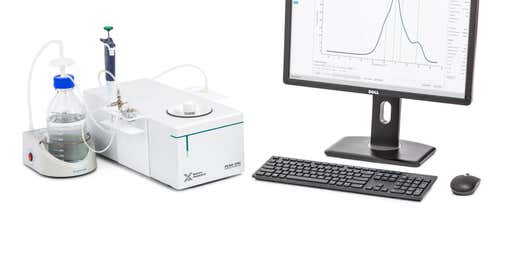
Biologics discovery and early development
Biophysical data that supports confident early-stage decision-making

Biophysical data that supports confident early-stage decision-making

Successful development in the field of biologics relies heavily on the quality and reliability of the data generated and the decisions it drives during discovery and early development. Rapidly identifying molecules, from peptides to recombinant proteins, that are both active against the target and possess appropriate developability characteristics, reduces the risk of costly failures further down the line. So too does quickly eliminating those most likely to fail. Malvern Panalytical’s biophysical characterization methods provide information about a biomolecule’s structure and stability, inter-molecular binding affinity and kinetics, supporting a detailed understanding of its likely behavior.
Understanding and controlling the quality and stability of assay components, their purity and functionality is fundamental to generating robust, repeatable data.
For biologics, it is often the case that the target and the drug molecule are both proteins. Target and drug must be stable and active under assay conditions to avoid unreliable results, repeat screening requirements, and potentially false negatives. Protein aggregation can compromise the quality of screening activities and it is essential to ensure that all batches of the respective proteins are the same.
Biophysical characterization supports the development and optimization of biochemical, biophysical and cell-based assays to ensure their output enables selection of the most promising hits and candidates.


In biopharmaceutical discovery, the 'hit' molecules, or 'parental' protein drug molecules, are modified or engineered to improve their expression level, stability, potency, bioactivity or safety, or to make the protein more developable. It is important to evaluate the stability of these recombinant proteins after the engineering steps are complete and before candidate selection. This allows informed selection of appropriate constructs and the rapid elimination of unsuitable variants that might be prone to effects such as thermal lability, increased heterogeneity or a propensity to aggregate.
Malvern Panalytical’s systems help answer questions of binding capability and stability using Isothermal Titration Calorimetry, Differential Scanning Calorimetry and Dynamic Light Scattering.


Determining the binding affinity of potential drug candidates to the drug target typically involves the use of high-throughput techniques such as Surface Plasmon Resonance (SPR) and Enzyme-Linked Immunosorbent Assays (ELISAs). Recently, Malvern Panalytical added the Creoptix® WAVEsystem to their product range. The Creoptix® WAVEsystem, based on proprietary Grating-Couple Interferometry (GCI) technology, can provide label-free quantification analysis using real-time binding affinity and kinetics. The no-clog WAVEchips are ready for crude samples such as serum and plasma. Read more about how the Creoptix® WAVEsystem can accelerate your biologics research.
Once the activity is profiled, it is essential to know if a molecule presents a practical working proposition. Here, our biophysical characterization techniques help answer essential questions about whether or not the molecule tends to aggregate or fragment and if it has sufficient thermal stability.
Zetasizer systems are long-established in biopharmaceutical development for aggregate determination, while MicroCal PEAQ-DSC delivers detailed information on thermal stability. OMNISEC size exclusion chromatography helps map any fragmentation that may be occurring.
Moving into preformulation development, where small-scale biophysical studies help define the optimal buffer composition and pH conditions needed to help stabilize the protein, a typical stability screen will involve both DSC and DLS.

